It seemed like every time I turned around at the NRA show I saw another optics manufacturer that I wasn’t previously familiar with. Here are a few of the ones that stood out, priced on the budget end of the spectrum. Some of them really impressed me, and we’re working on T&E samples . . .
First up is Sun Optics. They have a huge product line, a teeny portion of which is pictured above. The glass on their tactical scopes seemed great for the price point, and we’ll be angling to test out a high-zoom (maybe 6-24x), first focal plane scope plus a 1-6x tactical option like the one seen below.
Vixen Optics is on the high end of price and quality in this post. They’re well-known for Japanese-made telescopes, spotting scopes, and binoculars. While some of their rifle scopes have been available in the U.S. for a while, it looks like they’re planning on expanding their presence.
Glass on these scopes is top notch. 
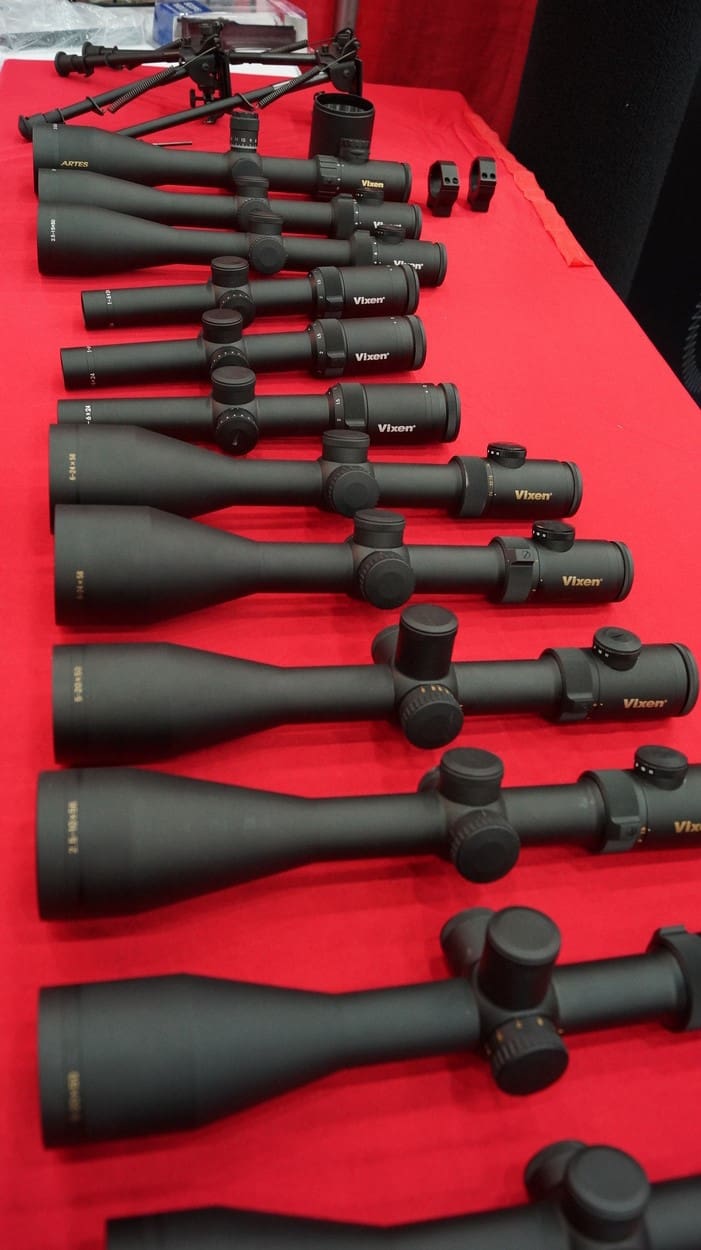
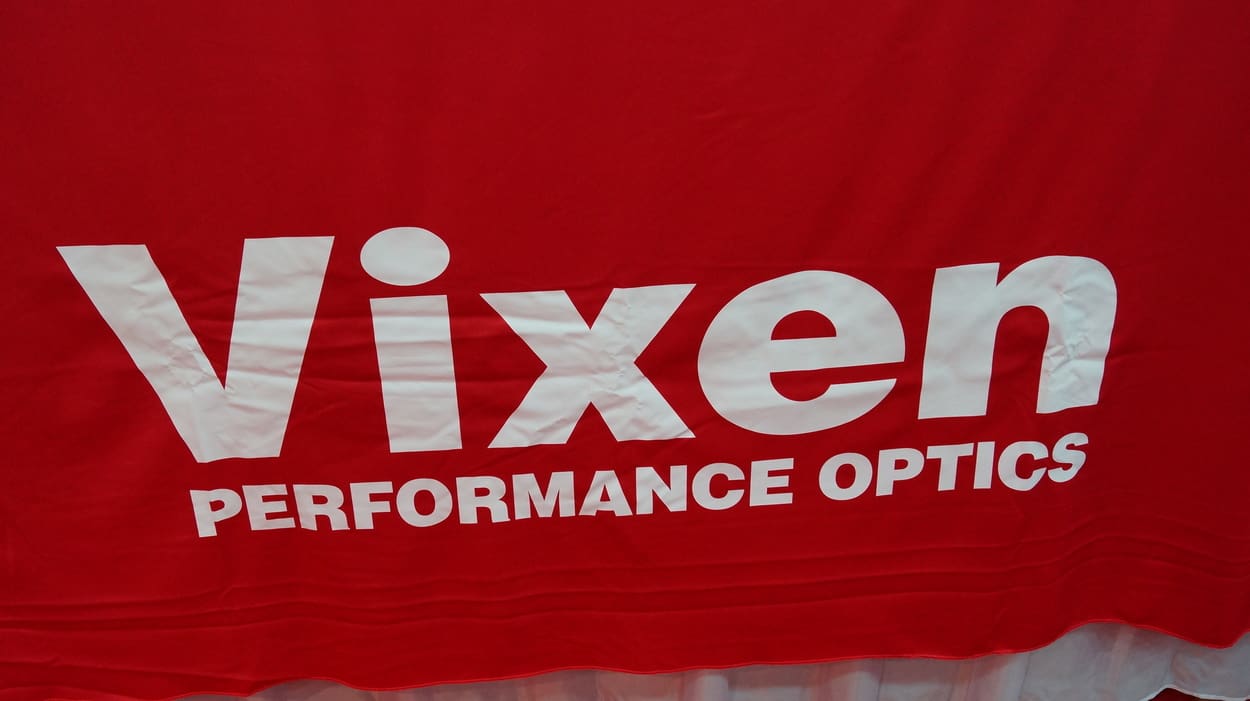
TRACT Optics is a new company with a unique — at least in this field — business model: they’re direct to consumer. The only way to get ’em is right through the TRACT website. With no distributor and retailer markups, their pitch is high-end optics at half the cost.
The guys running the company have a long background in firearms optics, working for many years at Nikon and Redfield prior to founding TRACT. Most of their optics are being made in Japan.
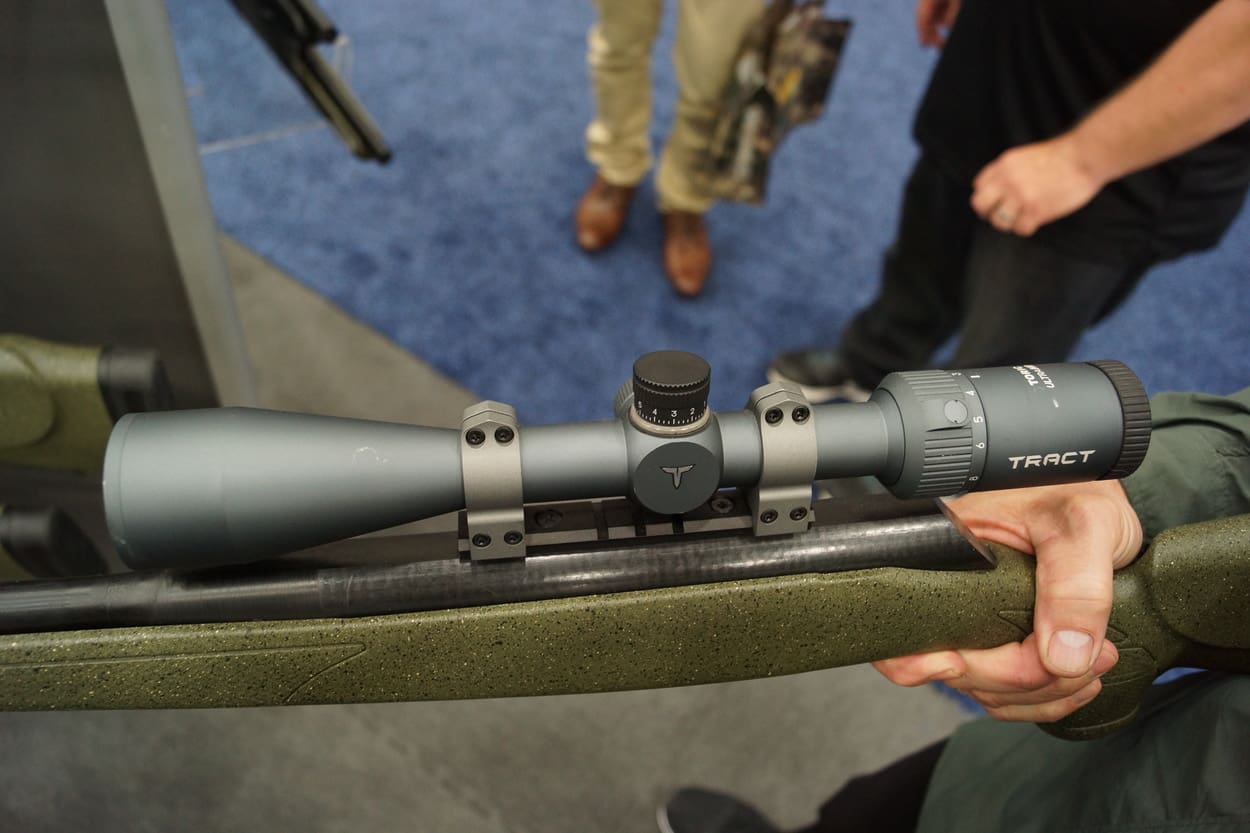

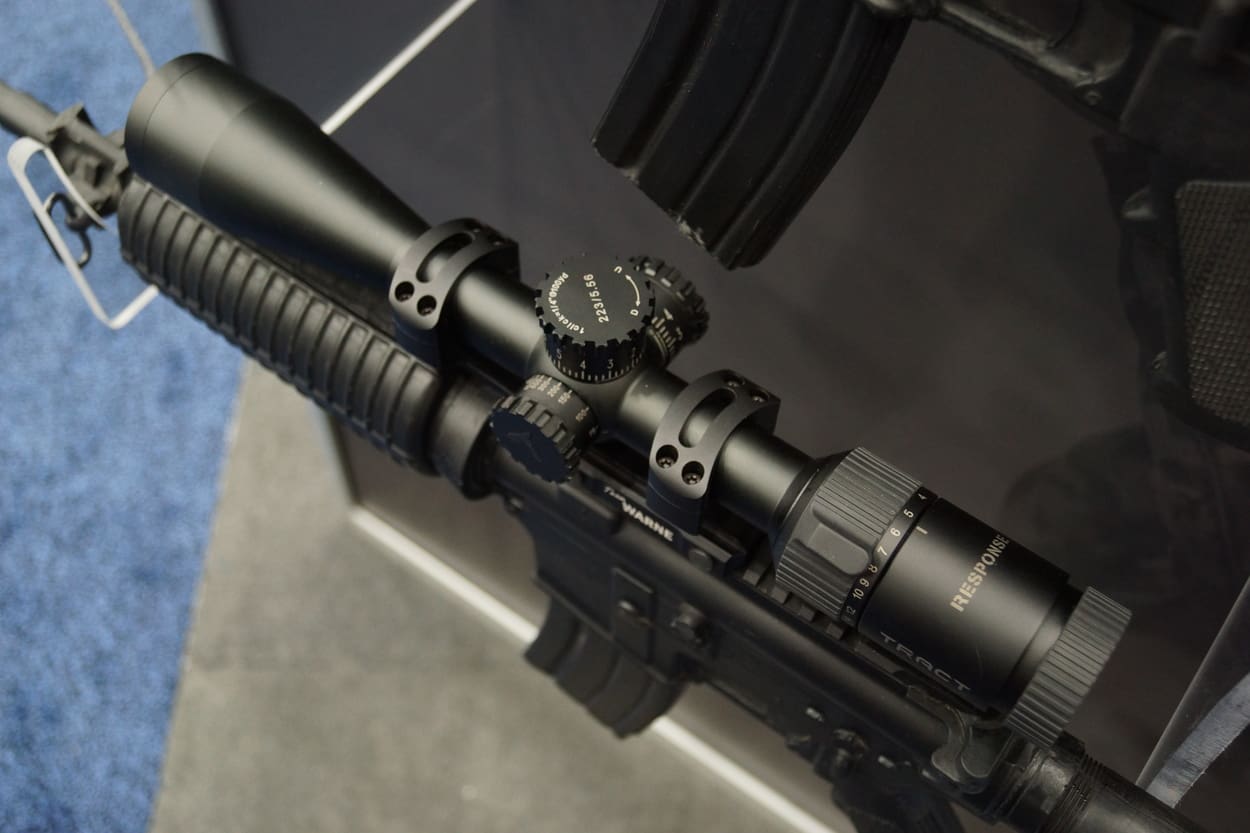

Hawke Optics makes a full line of riflescopes, mounts, red dots, spotting scopes, and more. I didn’t catch a lot of info about ’em, but we’ll look to fix that.
Finally, Rudolph Optics. Also making really nice stuff out of Japan, but coming in a lot less than some of the big-name companies that just may share the same factories as all of the other guys.
Somehow I managed to skip all of Rudolph’s scopes, though! It’s fair to say I was distracted by their tiny little range finger, which was very impressive in function as well. Especially at a $249 price point. 

The Stealth binoculars have range finding built in, with a slick little display in the bottom of each eye’s view.





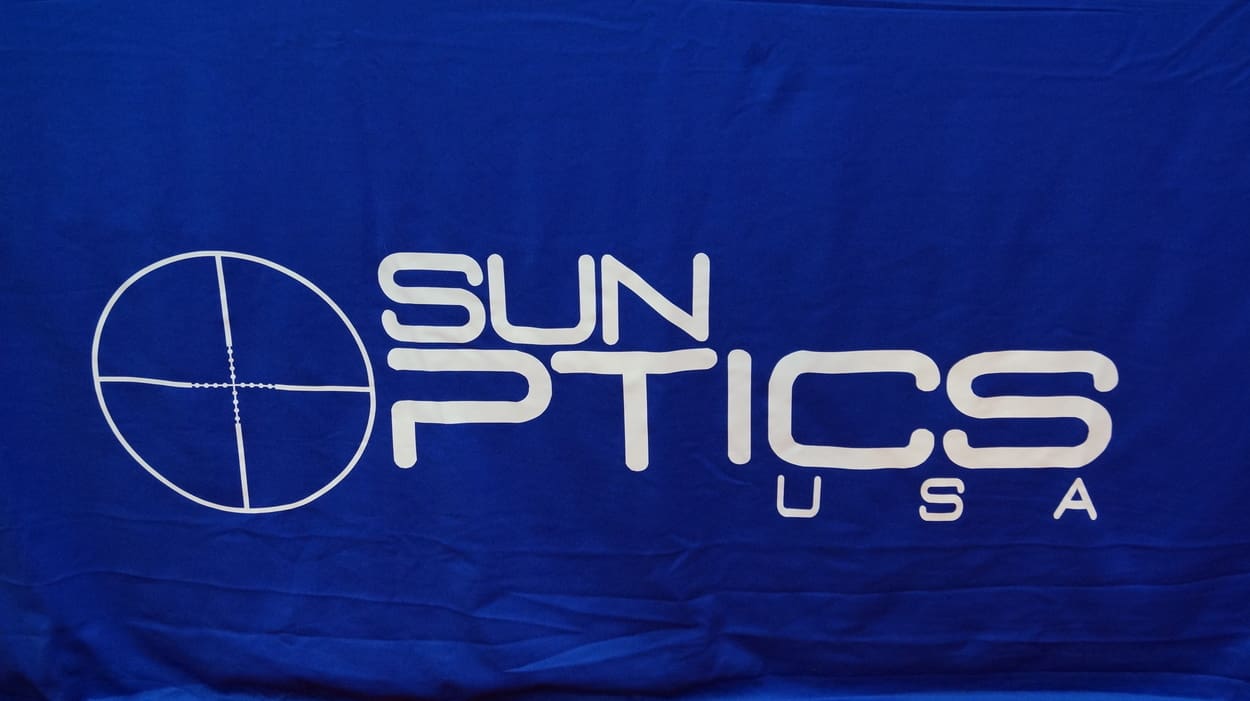



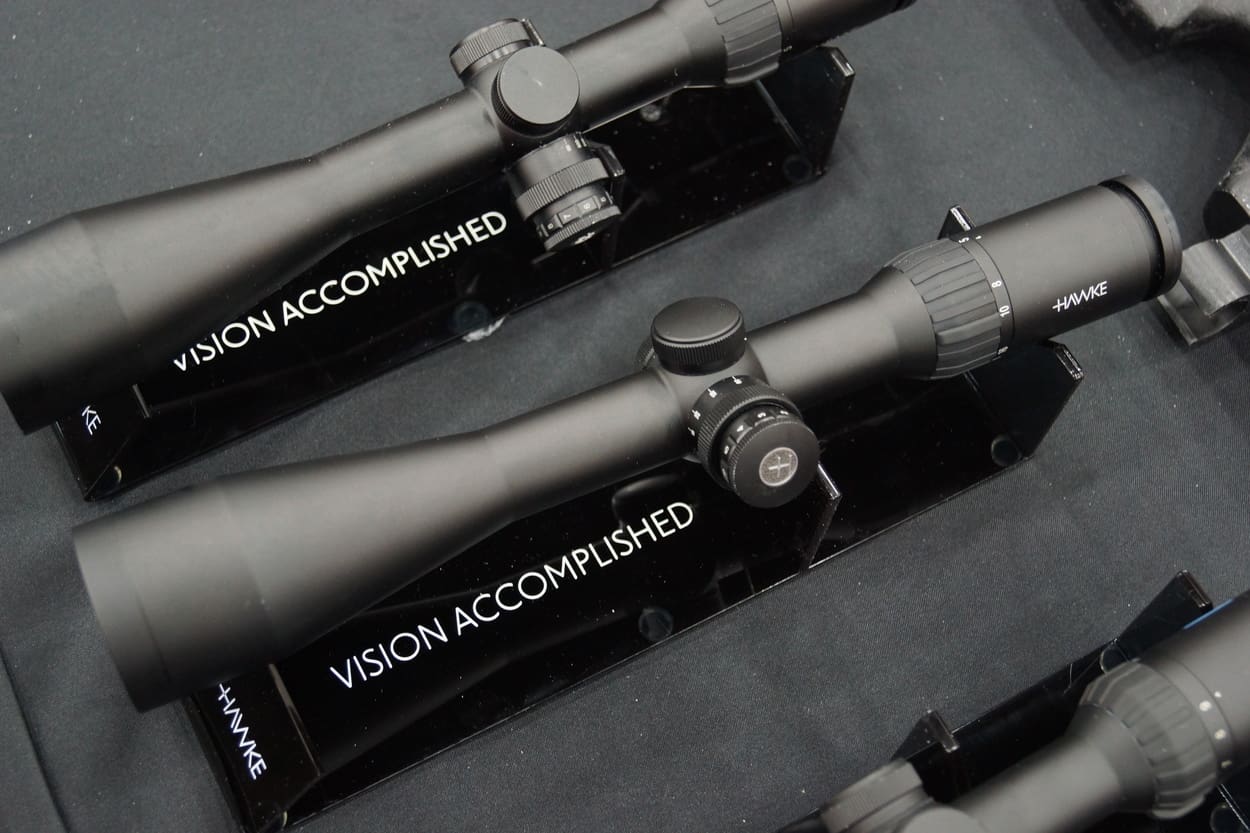



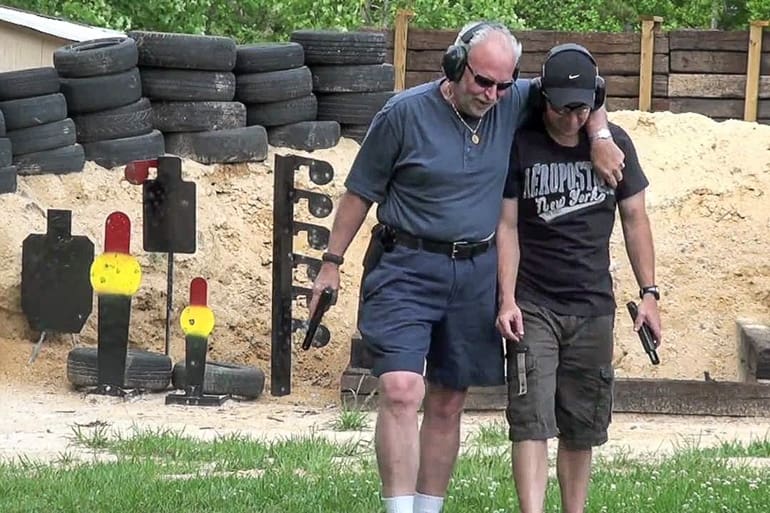

But do any of then have a warranty like Vortex does?
Allegedly, yes. I don’t know what the real-world experience is like with any of them, but a few of the brands offer lifetime no questions asked don’t have to be the original purchaser sort of guarantees.
If by budget-friendly you mean anything under $1000…
The high end Tract is $724, the lowest (on their main pages anyway) for a .22 is $174, in one of two reticle configurations, if that answers your question.
Yeah, none of these are cheap but they’re also not cheap. All of these companies would claim to be comparable to optics costing 2x, 3x, 4x more, and would make a point of being “inexpensive,” not “cheap.” Everything’s relative, though. Many of these are made in Japan and are very nice with what appear to be top-quality mechanicals, reticles, and glass. Some are made in the Philippines and are good quality at a lower price. Some are made in China, but they’ll tell you that they’re better quality than the stuff that comes out of the government/military factories there, and these are less expensive still.
Just wanted to throw this out there for any new shooters. Do your own research. Optical quality should have at most 25% importance. Most important thing is how solid the tracking is. See if anyone’s tested one and done a ladder test with the knob adjustments. Ask around to see if people have had issues. Reliability/repeatability should be the number one determinant.
And absolute nonstarter is anything (or components) made by Chicoms/PLA.
Some of those discuss do mention country of origin as Japan. Thanks for that info (to be verified by individual item).
A couple of the companies have models of varying origin so, yes, if it’s important to you you’ll want to verify. At least one of these companies sources from Japan, Philippines, and China depending on the scope model line. Seems like most of them were Japan and/or Philippines.
…we always check tracking by at least doing a box drill or two, and typically by dialing in dope at long ranges to see if it holds true, but I do intend to put a yard stick down at 100 yds and take it a step further for all future reviews…
Since I don’t need top-tier optics to put food on the table or for use on any two-way range, I’m more than willing to give budget optics a try. I have two different products wearing the BSA brand and have been very pleased with both. I have a BSA 2-7x-32mm pistol scope on a range-toy Ruger Charger and a BSA 4-14x-44mm mliradian first-focal side focus that rides on an AR. The 4-14x is probably the highest priced BSA scope out there selling for $250 at MidwayUSA (exclusive).
I’ve heard other rules-of-thumb for optics spending and I’ll offer my own: Spend about as much as 500 rounds of whatever ammo you expect to use most in the firearm.
I seem to find myself in the mid range of optics. Dont have any Nightforce, Swarovski, Zeiss, etc – really stick more with mid range Leupolds, Trijicon, Burris,Vortex, SWFA, etc. But really, for anything non-defensive, there’s no reason not to go with a cheaper option. As long as it can do the job. It is easy get a little spoiled on good glass though, and sure can end up an expensive habit.
Yeah. Optics are actually something I’ve always “skimped” on. I couldn’t get beyond the mental block of spending more on a red dot or a scope than the gun was worth. Just too hard when I have a budget and all but one of the guns are just for recreational use anyway. My first nice optic is the SIG Optics TANGO6 3-18x that I intend to finally publish a review on in a week or so. It’s the first scope I’ve owned that’s worth more than any rifle I own.
So you say you only own 1 expensive scope and you always skimp on them. So we’re then supposed to trust your opinion on the matter of what is a high quality item vs the opposite? Sorry pal, if you’re ok with skimping on a scope for your own guns then you’re not asking enough of them to know why cheap is cheap and your opinions on the matter are slightly suspect. I’m not saying you don’t know what you’re talking about, you likely have more exposure to a wide variety of optics than most people. Still, if you’re willing to sacrifice performance on your own kit then you just aren’t getting the kind of experiences with your scopes (which ostensibly you’d have the most hours behind and so the best idea of their capabilities) that would make your observations stand up to modest scrutiny. When I shot with $50 scopes, I thought they were just fine. When I moved up to $200 scopes I found out I was wrong about the $50 scopes and thought the $200 were amazing. When I moved up to $1000 scopes I found out I was wrong about the $200 scopes. When I moved into $3000 scopes I found out there’s only so much you can actually expect to get from money but that the $1000 scopes were a good start.
I personally own a lot of optics , from Night Force to BSA to Leatherwoods and have given even more away .
I primarily look for caliber specific stuff and generally leave the scope on the rifle I have calibrated it to so I look more for optical clarity and light transmission qualities over reticle type or adjustability . I own one long range 06 that cost about 3 bills and I have it comfortably fit with a 300 hundred dollar Leatherwood . I also have a $1,500.00 scope sitting proud on a 400 hundred dollar 22 , so I think it boils down to what fits best for your needs . I own several of the scopes shown in this article and can’t say I’m unhappy about it .
Agree. No personal affront meant, Jeremy, but there is a spectacular difference between the various price ranges. My scope inventory includes models from a wide range, depending on what sort of rifle it’s going on. Everything from Truglo and Millett on the low end, through a few Leupolds, Nikons, and Burris, to some high end models from Trijicon, IOR Valdada, and Nightforce. My precision, long range rifles always get the best I can afford, as do my go-to combat type rifles (the ones I would bug out with if I had to.)
Moving up from a Burris to a 3×18 IOR Valdada was quite the experience. The Burris, while clear and sharp, still was looking through a tube. When I looked through the IOR at a target for the first time, it was like looking through a picture window instead of a tube. So much more light, contrast, and detail.
I looked at several of the brands you mentioned here, and despite the fact that they only have 1″ tubes, am considering a Tract model now for a general purpose AR. But the fact that you still believe that an optic shouldn’t cost a significant fraction (if not more!) than the gun it’s fitted to indicates you haven’t recognized the value yet – and that value gets more and more important as your eyes age.
That comment is past-tense. It took me a long time to get around to spending real money on a nice piece of glass. Over the past four years I’ve shot everything on the market and spent significant time behind many of them. I’m no stranger to what separates optics in different price tiers internally, externally, and otherwise. After having various loaners of high-end scopes and red dots since moving back to WA from CA four years ago, the TANGO6 is the first I pulled the trigger on and decided to own permanently. Not the only one; the first one.
The differences are clear, literally and figuratively, but value is still subjective and depends very much on your intended use and what you can afford. The guy who goes out and shoots cans with his rifle twice a year isn’t going to get the same value out of a $3,000 scope as the guy who’s hunting, competing, or defending his home with it. I wouldn’t recommend to that person that he go out and purchase a Kahles or whatever. Arguing the value of a top-tier optic is completely meaningless without knowing who’s buying it and why. You want an optics snob who considers anything under $2k to be trash writing reviews on here? I don’t give a crap about what brand is on the side, and I do believe I’m qualified to weigh in on what is or is not good quality and value for the money. Not that I think my opinion is always right, which is why I try to ‘tell it how it is’ and make my reviews as objective as possible while inserting as little of my own opinion as possible. e.g. Some people like a stiff safety and some like an easy safety so I’ll just describe what it’s actually like compared to others and leave the opinion on whether it’s good or bad up to you.
That comment is past-tense. It took me a long time to get around to spending real money on a nice piece of glass. Over the past four years I’ve shot everything on the market and spent significant time behind many of them. I’m no stranger to what separates optics in different price tiers internally, externally, and otherwise. After having various loaners of high-end scopes and red dots since moving back to WA from CA four years ago, the TANGO6 is the first I pulled the trigger on and decided to own permanently. Not the only one; the first one.
The differences are clear, literally and figuratively, but value is still subjective and depends very much on your intended use and what you can afford. The guy who goes out and shoots cans with his rifle twice a year isn’t going to get the same value out of a $3,000 scope as the guy who’s hunting, competing, or defending his home with it. I wouldn’t recommend to that person that he go out and purchase a Kahles or whatever. Arguing the value of a top-tier optic is completely meaningless without knowing who’s buying it and why. You want an optics snob who considers anything under $2k to be trash writing reviews on here? I don’t give a crap about what brand is on the side, and I do believe I’m qualified to weigh in on what is or is not good quality and value for the money. Not that I think my opinion is always right, which is why I try to ‘tell it how it is’ and make my reviews as objective as possible while inserting as little of my own opinion as possible. e.g. Some people like a stiff safety and some like an easy safety so I’ll just describe what it’s actually like compared to others and leave the opinion on whether it’s good or bad up to you.
Might have to get one of the Tract scopes and test her out.
I would call them all optics marketers, I really doubt any of them actually own the facility that makes the scopes. Contracting with the real manufacturer to build a scope does not make you a manufacturer, just another marketing company.
I don’t believe any of them own any of the facilities. But that’s the case for a few of the brands the market considers to be fairly high-end as well.
As somebody who has run a small company selling my own brand of parts, though, I can tell you there’s still a lot of room for control. I designed the parts, spec’d materials, spec’d tolerances, spec’d welding processes, spec’d dimensions, spec’d finishes, etc, and worked with various manufacturers to make that happen to my liking. Most had jigs and processes totally unique to my brand — the others unique specs that became mine and mine alone — even though they sometimes sold their own brand or manufactured similar parts for other companies. I never “made” anything, but that absolutely doesn’t mean you could find the same product anywhere else in the world, or that there’s any way attempting to manufacture in-house could have resulted in a superior product vs using established, experienced, talented, fully-equipped, state-of-the-art, ISO-certified, etc etc etc facilities. Facilities that were also buying way more raw materials than I ever would have, thereby allowing me to sell my parts at competitive prices.
That may be true, it’s hard to say who’s actually doing the assembly, but you can be sure that almost nobody is making their own glass.
Good glass is damn hard to make. Sure the process has gotten easier and that is why a budget scope today beats the hell out of anything available just a few decades ago.
For top notch glass though, only a few factories in the world turn it out. They are usually easy to spot in that they will be the same folks who make the glass for high precision instruments, medical equipment and scientific research gear. All of which can make the cost and quality of the best scope seem lacking.
Of course, the mid to mid/lower range glass these days is pretty damn good too and serves my needs more than adequately.
Yeah, most of these models are sporting your HD low dispersion high density blah blah etc glass
I buy what I can afford and damn the gun writers and the opinionated. My stuff isn’t to make you feel good it’s for me to make the shot.
Case in point I have a buddy who must have the uber rifle and can’t shoot it yet after several months because he doesn’t have any sights or optics due to lack of funds. I built mine for half and have been shooting and hunting already. Amazingly no one has called to sponsor him or him new rifle nor has anyone complimented him outside his living room.
I have a Zeiss Conquest 3 X 9 on my M 14
I use a ” battle sight zero” of 50 yards and never touch the adjustments…ever
our longest range is 200 yards and I aim dead center at every distance
I am an inch high at 100 (still in the bullseye) and back in the center at 200 yards
Could not be more simple
For me, optical clarity and durability are the most important qualities in a scope
I’ve got a $200 scope and I’ve got a $2000 scope and everything in between. Where most scopes at any price point fall short for me is repeatable tracking, less than 100mins of elevation adjustment and a pop up reset to zero. The only scope I know of that does all that for anywhere near a working man’s price point is the Nikon ProStaff 7 4-16×40 (or 50). I really hope one of the lines mentioned in the article is a “giant killer” but I doubt it.
Comments are closed.